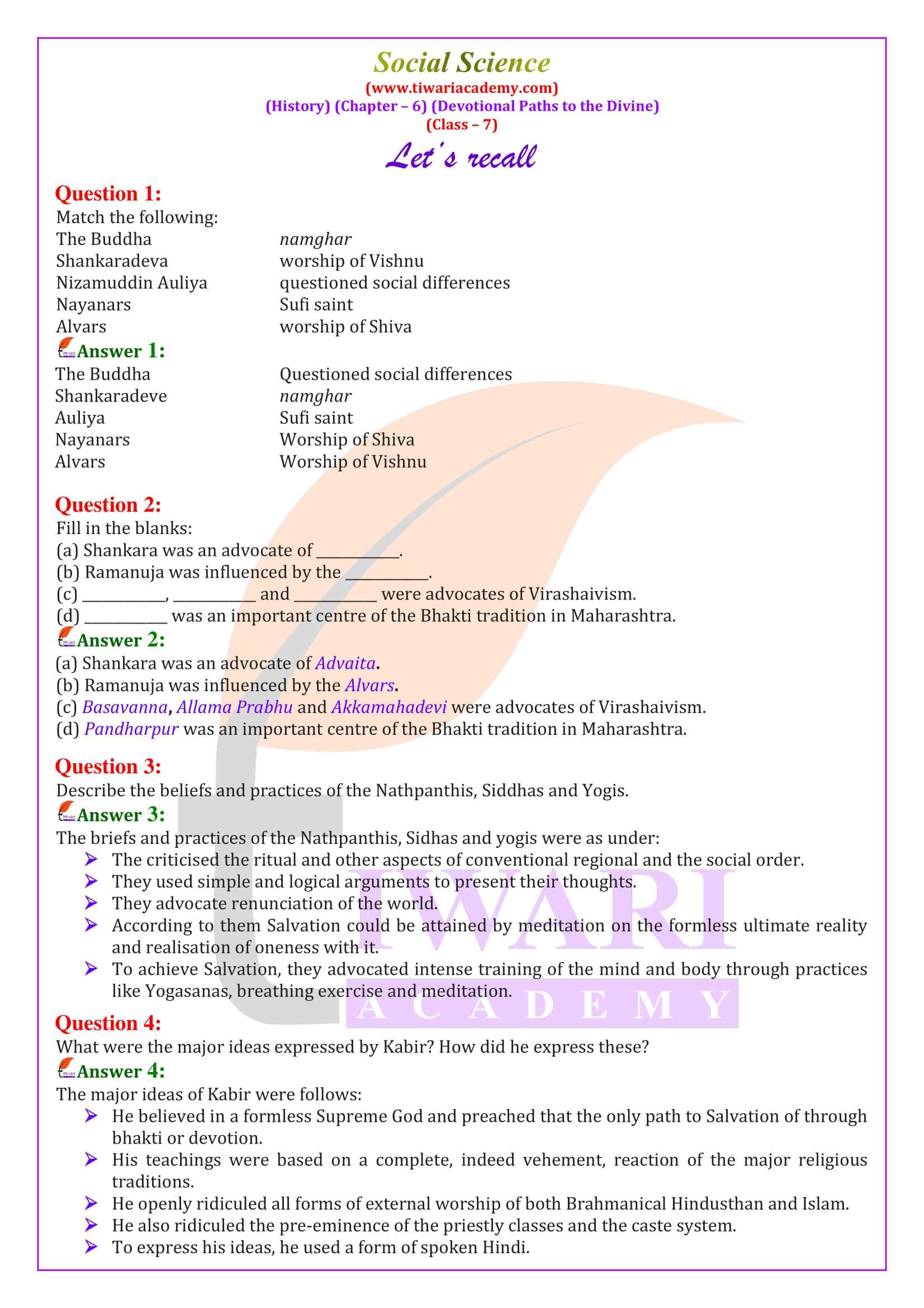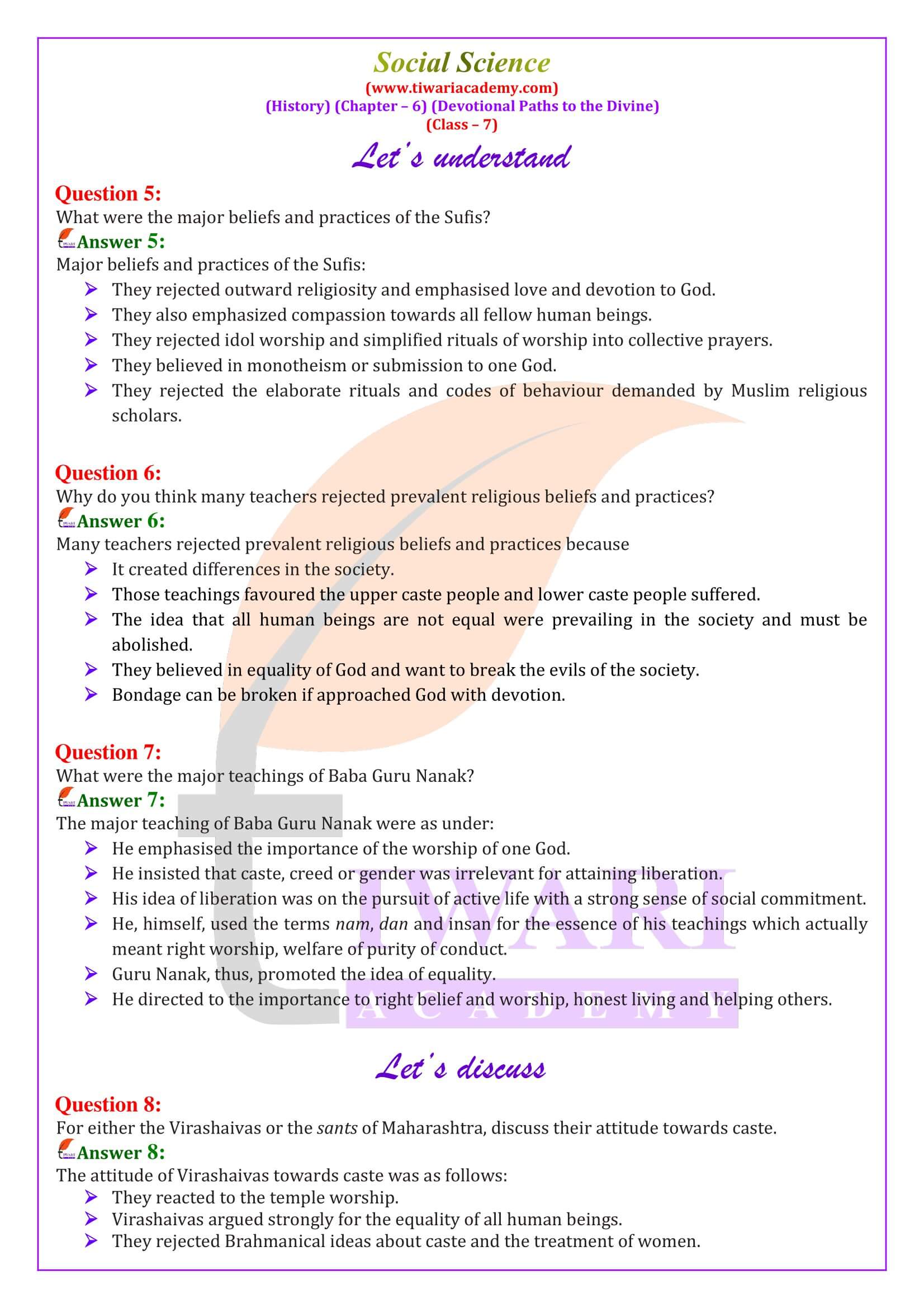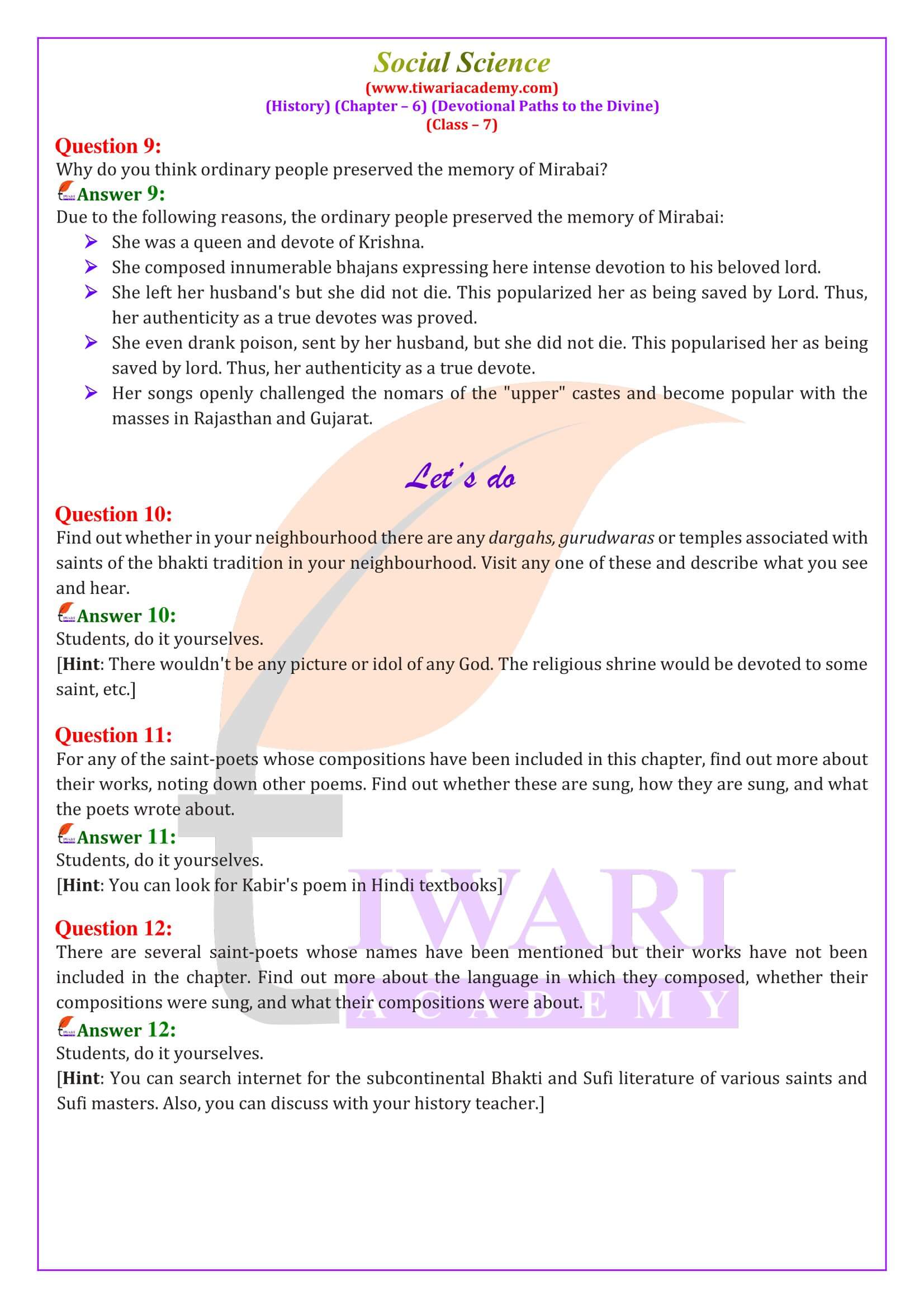NCERT Solutions for Class 7 Social Science History Chapter 6 Devotional Paths to the Divine in English Medium and Hindi Medium free to View online or download in PDF format updated for new academic session 2025-26. Download Updated NCERT Solutions App and NCERT Solutions for the academic session 2023–2024. All the contents on this website is free to use without any registration or login.
NCERT Solutions for Class 7 Social Science History Chapter 6
7th History Chapter 6 Solution in Hindi and English Medium
| Class: 7 | History |
| Subject: | Social Science |
| Chapter 6: | Devotional Paths to the Divine |
| Academic Session: | 2025-26 |
| Medium: | Hindi and English Medium |
Class 7 History Chapter 6 Question Answers
CBSE NCERT Solutions for Class 7 Social Science History Chapter 6 Devotional Paths to the Divine in Hindi and English Medium updated format for 2025-26, is given here free. Download NCERT Solutions 2025-26 and CBSE Apps for 7th Standard for new session 2025-26 from Play Store or App Store.
Class 7 History Chapter 6 in English Medium
Philosophy and Bhakti
Shankara, one of the most influential philosophers of India, was born in Kerala in the eighth century. He was an advocate of Advaita or the doctrine of the oneness of the individual soul and the Supreme God which is the Ultimate Reality. He taught that Brahman, the only or Ultimate Reality, was formless and without any attributes. He considered the world around us to be an illusion or maya, and preached renunciation of the world and adoption of the path of knowledge to understand the true nature of Brahman and attain salvation.
Class 7 History Chapter 6 Extra Questions
Describe the beliefs and practices of the Nathpanthis, Siddhas and Yogis.
The briefs and practices of the Nathpanthis, Sidhas and yogis were as under: The criticised the ritual and other aspects of conventional regional and the social order. They used simple and logical arguments to present their thoughts. They advocate renunciation of the world. According to them Salvation could be attained by meditation on the formless ultimate reality and realisation of oneness with it. To achieve Salvation, they advocated intense training of the mind and body through practices like Yogasanas, breathing exercise and meditation.
What are Nayanars and Alvars?
The seventh to ninth centuries saw the emergence of new religious movements, led by the Nayanars (saints devoted to Shiva) and Alvars (saints devoted to Vishnu) who came from all castes including those considered “untouchable” like the Pulaiyar and the Panars. They were sharply critical of the Buddhists and Jainas and preached ardent love of Shiva or Vishnu as the path to salvation. They drew upon the ideals of love and heroism as found in the Sangam literature (the earliest example of Tamil literature, composed during the early centuries of the Common Era) and blended them with the values of bhakti. The Nayanars and Alvars went from place to place composing exquisite poems in praise of the deities enshrined in the villages they visited, and set them to music.
Who were the Saints of Maharashtra?
From the thirteenth to the seventeenth centuries Maharashtra saw a great number of saint-poets, whose songs in simple Marathi continue to inspire people. The most important among them were Dnyaneshwar (Gyaneshwar), Namdev, Eknath and Tukaram as well as women like Sakhubai and the family of Chokhamela, who belonged to the “untouchable” Mahar caste. This regional tradition of bhakti focused on the Vitthala (a form of Vishnu) temple in Pandharpur, as well as on the notion of a personal god residing in the hearts of all people.
Class 7 Social Science – History Chapter 6 – Important Questions
What were the major ideas expressed by Kabir? How did he express these?
The major ideas of Kabir were follows: He believed in a formless Supreme God and preached that the only path to Salvation of through bhakti or devotion. His teachings were based on a complete, indeed vehement, reaction of the major religious traditions. He openly ridiculed all forms of external worship of both Brahmanical Hindusthan and Islam. He also ridiculed the pre-eminence of the priestly classes and the caste system. To express his ideas, he used a form of spoken Hindi.
What were the major beliefs and practices of the Sufis?
Major beliefs and practices of the Sufis: They rejected outward religiosity and emphasised love and devotion to God. They also emphasized compassion towards all fellow human beings. They rejected idol worship and simplified rituals of worship into collective prayers. They believed in monotheism or submission to one God. They rejected the elaborate rituals and codes of behaviour demanded by Muslim religious scholars.
Why do you think many teachers rejected prevalent religious beliefs and practices?
Many teachers rejected prevalent religious beliefs and practices because It created differences in the society. Those teachings favoured the upper caste people and lower caste people suffered. The idea that all human beings are not equal were prevailing in the society and must be abolished. They believed in equality of God and want to break the evils of the society. Bondage can be broken if approached God with devotion.
What were the major teachings of Baba Guru Nanak?
The major teaching of Baba Guru Nanak were as under: He emphasised the importance of the worship of one God. He insisted that caste, creed or gender was irrelevant for attaining liberation. His idea of liberation was on the pursuit of active life with a strong sense of social commitment. He, himself, used the terms nam, dan and insan for the essence of his teachings which actually meant right worship, welfare of purity of conduct. Guru Nanak, thus, promoted the idea of equality. He directed to the importance to right belief and worship, honest living and helping others.
For either the Virashaivas or the sants of Maharashtra, discuss their attitude towards caste.
The attitude of Virashaivas towards caste was as follows: They reacted to the temple worship. Virashaivas argued strongly for the equality of all human beings. They rejected Brahmanical ideas about caste and the treatment of women.
Why do you think ordinary people preserved the memory of Mirabai?
Due to the following reasons, the ordinary people preserved the memory of Mirabai: She was a queen and devote of Krishna. She composed innumerable bhajans expressing here intense devotion to his beloved lord. She left her husband’s but she did not die. This popularized her as being saved by Lord. Thus, her authenticity as a true devotes was proved. She even drank poison, sent by her husband, but she did not die. This popularised her as being saved by lord. Thus, her authenticity as a true devote. Her songs openly challenged the nomars of the “upper” castes and become popular with the masses in Rajasthan and Gujarat.
Important Notes on 7th History Chapter 6




